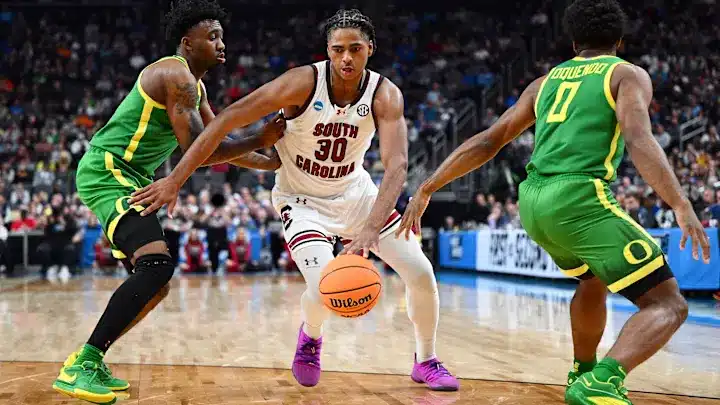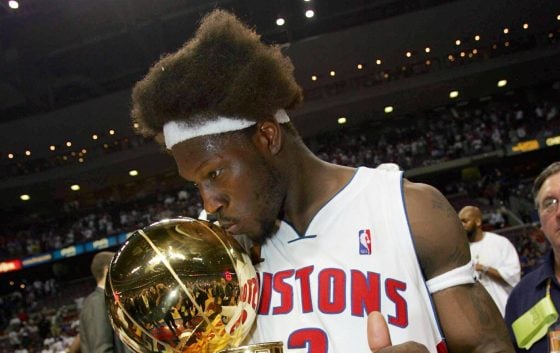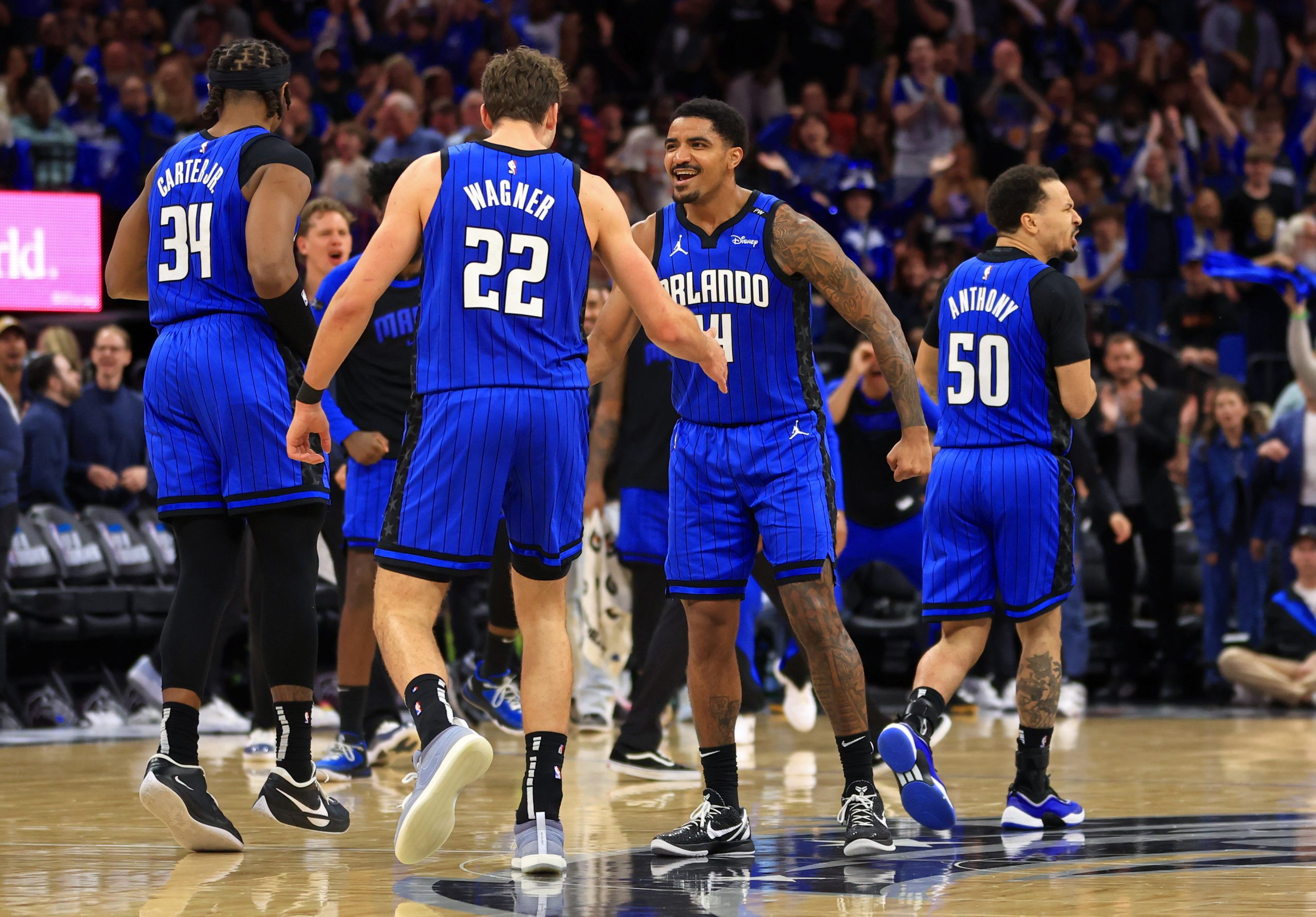Jayson Tatum has scored 129 points in his last three games for the Boston Celtics as he continues to spearhead his team’s surge up the Eastern Conference standings. Memories of Tatum’s early-season shooting struggles have been consigned to memory, with a “do not open” label firmly attached to them.
Suddenly, the three-time All-Star is firmly in the All-NBA discussion, and had these performances been consistent throughout the season, he would likely be a front-runner in the MVP discussion, too. Yet, while the current performances are entertaining, it’s Tatum’s growth as just not a scorer, but a more complete playmaker and defender over the last few months that make his recent developmental leap so tantalizing.
Previously, Tatum had been over-reliant on isolation basketball and had struggled to initiate the offense consistently. But, after watching the 24-year-old struggle for stretches of the last few years, we’re starting to see the fruits of his labor come to the fore and the Celtics ceiling has skyrocketed as a byproduct.
Off-ball scoring
When you think of off-ball offense, it’s common to think of catch-and-shoot opportunities. But I tend to define off-ball offense as anything that requires two or fewer dribbles after receiving the pass. Taking an extra dribble to beat a close-out is an excellent example of that thought process, as is a crossover side-step move to create some separation from the defender.
Tatum has always been a high-level scorer, but operating as an off-ball threat has always been one of the more underdeveloped aspects of his offensive game. Usually, we would see the St. Louis native flow into a pick-and-roll, over dribble, and then take a difficult shot. Sure, those tough looks fell more often than not. It’s how we knew Tatum was destined for greatness.
However, Tatum has shown exceptional growth in operating as an off-ball threat and is feasting on those opportunities as a result.
Jab step, one dribble, two big steps, bucket. The beauty of being an off-ball scoring threat is that you can instantly alter the flow of the game, catching defenses off-guard and getting to your spots easier than if you were in isolation.
It feels like a simple adjustment has been made – attack early and often, and if the defense takes away what you’re looking for, kick it out to the next guy. In essence, Tatum’s off-ball game is flourishing because of Ime Udoka’s 0.5 offensive scheme.
Of course, isolation has its place, but for Tatum, the reduction in self-creation and self-reliance have been huge factors in his current breakout.
Here’s another example of Tatum working as an off-ball scorer, this time against the Charlotte Hornets. A quick cut towards the nail allows the pass to find Tatum with very little resistance, then a quick drop-step into a finger roll ends in an easy two points for the Celtics. From when Tatum receives the ball to when he scores it, only one dribble occurs, and only two seconds are deducted from the shot clock. Far more efficient than trying to break your man down before attempting a side-step fadeaway at the elbow.
These types of possessions are accounting for more than 50% of his offensive production, and long may it continue.
Shot Profile
We’re now over a decade into the NBA’s analytics movement which saw the villainization of the mid-range shot, and the love affair with the three-point line take place. It’s worth remembering that analytics doesn’t say not to shoot middies, but rather to be judicial with who is taking the shot. You wouldn’t tell DeMar DeRozan to stop attacking the midrange, the same way LaMarcus Aldrige gets the green light from the free-throw line extended.
Tatum is talented enough to have that green light too and considering his propensity to duck into high-elbow post-ups, you would hope he feels comfortable working his magic from that range whenever the opportunity arises.
Since the All-Star break, we have seen a slight alteration in Tatum’s shot profile, where he’s sacrificing some mid-range looks for additional attempts at the rim, and given his increased strength and burly frame, that’s a good decision.
According to Cleaning The Glass, Tatum’s pre-All-Star break offense was split up like this;
- 30% at the rim – converting 65% of the time
- 33% in the mid-range – converting 39% of the time
- 37% from three – converting 33% of the time
Since February 22nd, Tatum’s offense looks slightly different:
- 34% at the rim – converting 69% of the time
- 28% in the mid-range – converting 40% of the time
- 39% from three – converting 35% of the time
It’s not just that Tatum is making more of his shots now. He’s also working to get higher quality shots that produce more consistent success.
Passing / Playmaking
In his past three games, Tatum has accumulated 12 assists, but considering the quality of his passing in recent weeks, that number feels criminally low. However, an average of four dimes per game from your #1 offensive option is hardly something to turn your nose up at.
There was a time, very recently, when it felt like Tatum was still another year or so away from being a legitimate initiator on the offensive end. Rapid improvements have seen that realization come to fruition sooner than expected, and are resulting in passes like the one above.
It wasn’t long ago that Tatum fires that shot off without a second thought. But now, the All-Star wing is processing that action quicker than at any other point in his career, and spotting passing lanes as a result. A quick fake to sell the close-out, and then a bounce pass to find Robert Williams in rhythm, creates a mismatch between Williams and Jerami Grant who has slid over as a help defender.
This time Tatum is backing down his man on the high-elbow, scanning the floor to see what unfolds or who shakes loose. Al Horford has drifted onto the weakside wing and is wide-open. A quick one-handed swing pass sees the ball zip over to the veteran big man, giving him ample time and space to get the shot off.
We’re also seeing Tatum grow as a playmaker out of pick-and-rolls (his most utilized play type this year, accounting for 19.2% of his total offense per Instat’s tracking data.) Above, we can see a simple pick-and-pop action with Horford on the strong side free-throw line extended. The pass itself is rather simple, but Tatum drags his dribble for a few steps, knowing the defense is going to follow him and creates a shooting pocket for Horford. The result is an open middie from a veteran who come up in the mid-range area. Beautiful.
Perimeter Defense
You don’t earn minutes in Udoka’s team without being a viable defensive option. Heck, even Payton Pritchard is making his presence felt when afforded playing time. So, it makes sense that Tatum is pitching in on that end of the floor as well.
Now, Tatum has never been a bad defender, and he’s certainly never mailed it in either. But suddenly, a player who excelled as an off-ball passing lane pest is growing into a switchable point-of-attack savant, capable of rotating onto guards and bigs as well as being comfortable operating as a helper.
I’ve taken this breakdown from my Instagram page.. In the above play, we see Tatum start off as an off-ball defender, flow into a helper, and then close out into a point-of-attack defender on Cade Cunningham (one of the shifter guards in the league right now).
It’s that type of versatility that has seen Tatum become a bona fide two-way star, capable of taking command of a game on both ends of the floor. We’ve long postulated about its eventuality, but now that it’s a reality, it’s better than ever expected.
This version of Tatum is for real
Even Brad Stevens joked about Tatum’s post-All-Star break form, as it’s become a narrative over the last three years. But, when watching how the 24-year-old — sorry, I mean 19-year-old — is approaching the game, and the speed at which he’s processing action, this latest uptick in performance feels like it’s here to stay.
We’ve all been told to “keep at it” when improving at something, and that one day it will all “click” and that’s what it looks like is happening to Tatum. Udoka’s vision of his star player operating as the focal point is finally materializing, and it’s taking him to brand new heights.
Now, Tatum enters games and is usually the most talented player on the floor, but we’ve known that for some time. The difference is, it seems that Tatum knows that now too, and that’s usually when guys start heading towards the top of the mountain. We’ve seen dominant performance after dominant performance in recent weeks, and if this continues into the playoffs, Boston is going to be a tough opponent to face.
It’s been a bumpy road for Tatum this season, but if this is the end destination, all of those struggles have undoubtedly been worth it.






